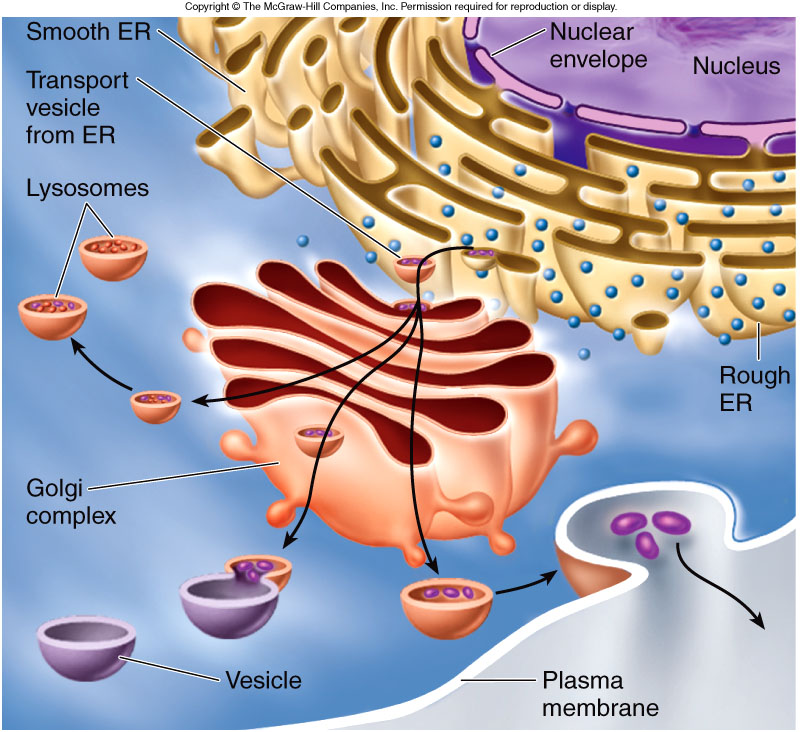In the first section of this page, you will write a daily summary of that day's class. For example in your chapter 2 blog, your first entry should be titled 9/3/10. You should then write a one or two paragraph summary of that day's lecture, outlining the major points. In the second section, you are required to add two items (link to a website, video, animation, student-created slide show, student-created PowerPoint presentation) and one journal article pertaining to a topic in this chapter. A one-paragraph summary must accompany each item describing the main idea and how it applies to the lecture topic. Please see the PBWorks help guide for assistance embedding video and other items directly in the page. I will also produce a how-to video on using tables to wrap text around items and other useful tips. Please see the syllabus for organization and grading details.
A. Daily Blog
September 17, 2010
A gene is a discrete unit of DNA that encodes for a functional product, ex: RNA or a protein. The expression of genes gives different structures their unique forms. We also learned that the backbone stabilizes the structure in secondary structures, amino acids can also help stabilize a structure. The class then looked at an experiment where the hypothesis was to determine whether the folding of proteins is determined by other cellular structures/factors or if it is encoded in the protein. We looked at the procedure and the outcome of the experiment, and it was determined that certain proteins like ribonuclease can fold into there final functional shapes without assistance from other structures or factors.
September 22, 2010
I whipped my phone out in the beginning of class anticipating a texting poll...which we did not have! I was surprisingly disappointing because I was actually looking forward to it. But anyways, we started off the class with talking about prokaryotes and eukaryotes. A few main differences between these two types of cells is that prokaryotes have no membrane-bound organelles, and no nucleus. I also discovered that errors in proteins that my lead to diseases are often due to protein trafficking. Speaking of proteins, let's not forget that the primary structure of a protein is definitely the most important! Now, moving on to the endomembrane system. The goal of this system is to keep everything out of the cytoplasm, meaning there's vesicles that are used to transport items within a bubble of membrane, the E.R. (rough E.R. participates in protein synthesis, whereas smooth E.R. detoxifies and produces lipids). , and the golgi apparatus which helps process peptides and is in charge of modifying and distributing cargo. The last thing we touched upon was how radioactive proteins can be tracked within a cell.
September 24, 2010
We begun talking about protein trafficking, or the way that proteins are sent to their destinations. Then, we discussed how translation works: From the nucleus, the DNA gets transcribed to mRNA, and then through translation protein synthesis occurs. And let's not forget that all translations start in the cytoplasm! How does a protein end up in the protein trafficking pathway anyways? Well amino acids and peptide bonds that are used as traffic signals to help it be identified as a protein that must be "trafficked". The majority of the E.R. signal sequence is overwhelmingly hydrophobic, meaning that it can participate in Vanderwahls interactions. SRP, or the signal recognition particle, binds to the amino acids and brings the complex to the rough E.R. It does this by using it's binding cleft to bind to the E.R signal sequence. Within this binding cleft would be R-groups that are mostly hydrophobic, since the item that it is binding is also mostly hydrophobic. This E.R. signal sequence is what directs the protein to it's destination, without it, it would stay in the cytosol with no function and be disposed of.
B. Useful Materials
|
This video demonstrates how SRP works. Translation begins with the synthesis of a peptide sequence, SRP then binds to the peptide while translation continues. It then binds to it's receptor in the E.R. membrane, anchoring the ribosome allowing the protein passes through the protein translocator into the E.R. http://www.youtube.com/watch?v=XCLfdGbySAA (this video explains it better, but the other video depicts it better....plus i didn't see this video until after I already posted the other one :P) |
|
 |
This is a picture of the endomembrane system, whose goal is to keep everything out of the cytoplasm. The vesicles are used to transport things throughout the cell. An example of this is how the E.R. ends items like newly synthesized proteins, using vesicles, to the golgi apparatus to be modified and secreted. |
| Protein Trafficking | I'm not quite sure what a Rabs are, but from the first sentence I'm assuming that they are a type of membrane trafficking protein in eukaryotic cells. Because the function for most Rab isoforms are unknown, but thanks to enhanced green flourescent protein, domain-containing rab, and a bunch of other new tools they are able to isolate specific Rabs and regulate their transport. This will eventually help determine the function or Rab isoforms in membrane traffic. |